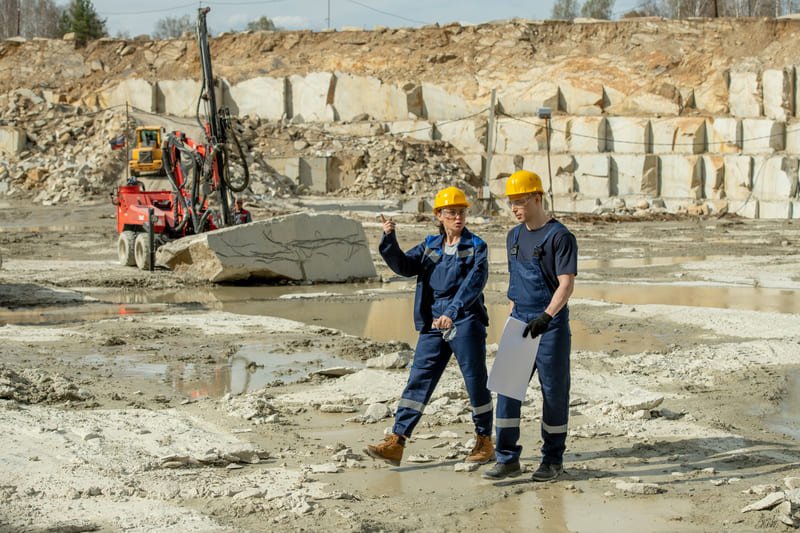Have you ever thought about how rock hardness affects drilling? Let's explore this interesting part of drilling. It really plays a crucial role. Rock hardness is very important!
Rock hardness is very important for how drill bits wear down. Harder rocks lead to faster wear. Knowing these dynamics helps you choose the right drilling tools. It also improves performance. This understanding reduces costs. It also extends equipment life. Equipment lasts longer.
I remember my first time on a drilling site with granite. The drill bit struggled and seemed to scream against the hard rock. This moment showed me how crucial rock hardness is for drilling. Hard rocks, such as granite, quickly wear out drill bits. But softer rocks, such as limestone, bring different challenges. This knowledge helps pick the right tools. It also helps plan wear rates and maintenance schedules. This insight is very valuable for anyone in this field.
Harder rocks cause faster drill bit wear compared to softer rocks.True
The abrasive nature of harder rocks leads to quicker deterioration of drill bits, impacting performance.
Drill bit efficiency is unaffected by rock hardness variations.False
Rock hardness directly influences wear rates and efficiency, making this claim false.
What are the Different Rock Hardness Levels and Their Characteristics?
Do rocks really differ in hardness? What does that mean for building or drilling? Discover the amazing world of rock hardness levels. They affect our daily lives! Let's explore together!
The Mohs scale categorizes rock hardness from talc (1) to diamond (10). Each level greatly affects how well drilling equipment works. These levels also impact how quickly tools wear out. Understanding rock hardness is really important for construction and mining industries.
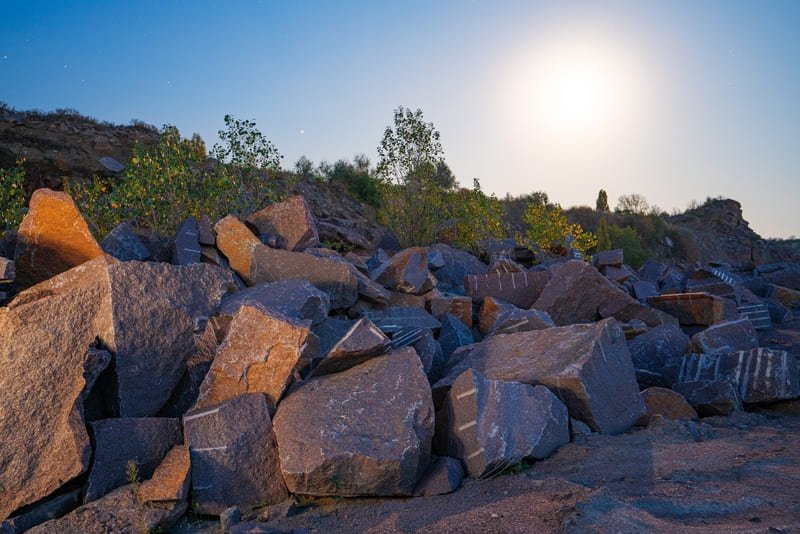
Understanding Rock Hardness Levels
Learning about rock hardness felt like discovering a hidden language. The Mohs scale became my guide, helping me understand how minerals scratch each other. This scale runs from 1 (very soft) to 10 (very hard). Its impact is significant in construction and mining.
Mohs Hardness Scale Table
| Hardness Level | Mineral | Characteristics |
|---|---|---|
| 1 | Talc | Very soft, greasy feel, easily scratched |
| 2 | Gypsum | Soft, can be scratched with a fingernail |
| 3 | Calcite | Soft, reacts with dilute acid |
| 4 | Fluorite | Fairly soft, can be scratched with a knife |
| 5 | Apatite | Medium hardness, can scratch glass |
| 6 | Orthoclase | Harder, scratches glass easily |
| 7 | Quartz | Hard, very common in many rocks |
| 8 | Topaz | Hard, often used in jewelry |
| 9 | Corundum | Very hard, includes sapphires and rubies |
| 10 | Diamond | The hardest known mineral, used in cutting tools |
Minerals convey stories about their strength and use in many industries. Diamond - the hardest of all - is more than a beautiful gem. It excels in cutting tools and industrial tasks.
Characteristics of Different Hardness Levels
Knowing these traits has been essential, especially for observing drill bit wear.
Soft Rocks (Mohs 1-3)
- Talc: Used often for baby powders; incredibly soft!
- Gypsum: Found in the drywall surrounding us.
These rocks produce less wear on drilling gear but need gentle handling due to their fragility. I remember a contractor wasting time by underestimating gypsum’s delicacy.
Medium Hard Rocks (Mohs 4-6)
- Calcite: Found in limestone; reacts dramatically with acid!
- Fluorite: Important in aluminum production.
These rocks balance drilling efficiency and wear on bits. A thrill arises when drilling at just the right angle!
Hard Rocks (Mohs 7-10)
- Quartz: Famous for countertops and watches.
- Diamond: Holds the title of hardness champion.
Drilling into these tough rocks wears down bits quickly. It's like cutting steak without a sharp knife - suitable tools are essential.
Practical Implications of Rock Hardness
Rock hardness influences drilling efficiency and equipment choices in construction.
- Increased Thrust Requirements: Harder rocks demand greater thrust and faster rotary speeds - a real test for machinery!
- Gauge Wear: Hard rocks can wear drill bits down fast, necessitating tools that hold precise diameters for effective work.
Conclusion
Knowing rock hardness has transformed my approach in drilling and construction. It aids in smart decisions for equipment and strategies. For those interested in exploring rock hardness further, this comprehensive guide1 offers an excellent resource on geological uses and testing methods.
The Mohs scale ranges from 1 (talc) to 10 (diamond).True
This statement accurately describes the range of the Mohs hardness scale used to classify minerals.
Diamond is softer than talc on the Mohs scale.False
This claim is false; diamond is the hardest mineral, ranking at 10, while talc is at 1.
How Can Drill Bit Material Selection Mitigate Wear in Hard Rock?
Selecting the correct drill bit material goes beyond technical choices. It involves grasping the type of rock and the surrounding environment. Efficient work relies on this understanding. The right material probably affects performance and lifespan significantly.
Choosing the correct drill bit material is key for reducing wear in hard rock. Durable materials, such as tungsten carbide or diamond, are essential. They improve efficiency. These materials last longer. Costs stay lower with these choices.
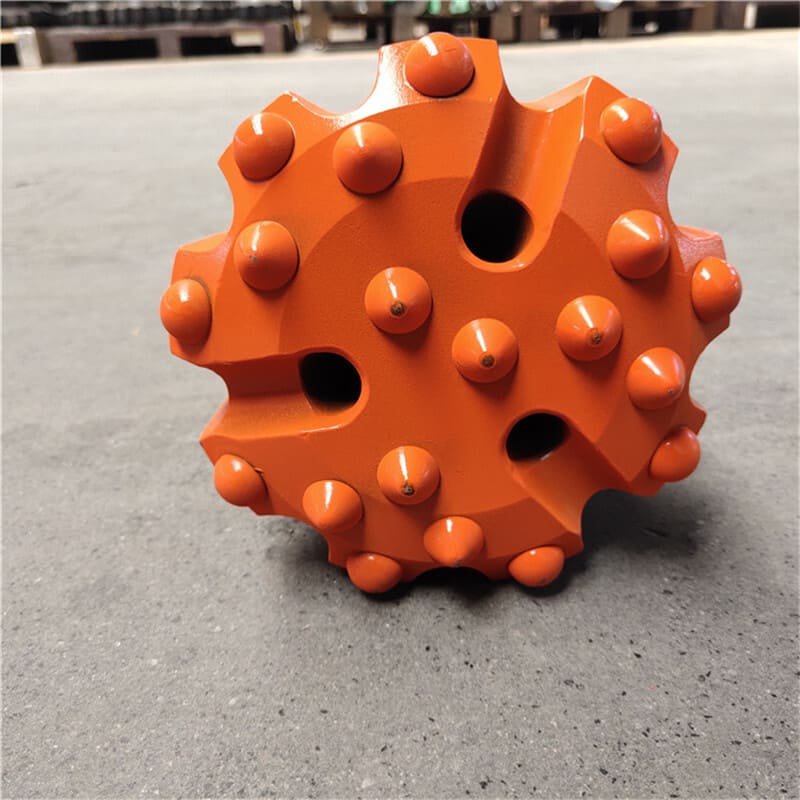
Understanding Hard Rock Wear Mechanisms
Drilling in hard rock presents unique challenges due to the physical properties of the materials being drilled. The selection of drill bit material is critical because it directly affects how the bit performs under extreme conditions. For instance, when drilling through granite or quartzite, the drill bit faces not just wear but also potential failure from the intense forces exerted during operation.
Factors Influencing Wear in Hard Rock
-
Material Hardness: Your drill bit must be as hard or harder than the rock you work with. From my experience, bits made from carbide or diamond have greatly reduced wear. It’s like having armor against the toughest enemies.
-
Toughness: While hardness is important, toughness is equally critical. If too hard, the material can break under impact. I learned this with some high-speed steel bits that cracked under pressure. Choosing materials that balance hardness and toughness, like tungsten carbide, has saved me many problems.
-
Thermal Stability: Heat builds up when drilling in hard rock. Bits that handle high temperatures - like those made of ceramic composites - are very valuable. I recall one hot summer when my bits overheated and wore down too quickly.
Types of Drill Bit Materials
| Material Type | Hardness Level | Toughness Level | Best Use Case |
|---|---|---|---|
| Tungsten Carbide | Very High | Moderate | Hard rock drilling |
| Polycrystalline Diamond (PCD) | Extremely High | Low | Extremely hard formations |
| High-Speed Steel | Moderate | High | General use, softer rock formations |
| Ceramic Composites | High | Moderate | High-temperature applications |
Advanced Bit Designs
Over the years, I’ve realized that bit design matters as much as material choice. Features like reinforced cutting edges and optimized button placement have really improved wear rates for me:
- Reinforced Cutting Edges: These edges can handle stronger impacts and abrasion, reducing wear rates significantly.
- Optimized Button Placement: This placement spreads stress evenly across the bit, minimizing localized wear.
For example, I once used a hybrid bit design2 that combined different materials to leverage their strengths effectively.
Maintenance Best Practices
To keep wear under control, regular maintenance is necessary:
- Inspect Bits Regularly: Spotting wear early has stopped many failures for me.
- Sharpen Bits When Necessary: A sharp bit drills with less force, which means less wear. I learned this after a long job with dull bits.
- Monitor Operating Conditions: Adjusting speed and pressure based on rock type has become natural for me; it really helps manage wear effectively.
By using these strategies from my own experiences, I have greatly improved my drilling efficiency in hard rock while also reducing costs from early bit replacement. If you want more tips on extending drill bit life, check out this resource3.
Tungsten carbide is ideal for hard rock drilling.True
Tungsten carbide has very high hardness, making it suitable for drilling in tough materials like granite and quartzite.
High-speed steel drill bits are best for hard rock.False
High-speed steel bits are not as hard as tungsten carbide, making them less effective in hard rock applications.
What Are the Common Types of Wear Patterns Observed in Drilling Operations?
Do you ever think about why drill bits wear out more quickly in some situations? Knowing the usual wear patterns in drilling can really help improve equipment performance. It also extends the life of tools. Let's explore this together!
During drilling work, common wear patterns include abrasive wear, impact wear, thermal wear, button bit wear and gauge wear. It is very important to understand these patterns. They help increase drill bit efficiency. They also help the drill bits last longer. Selecting the right materials is also essential. Picking good operational practices matters too.

Understanding Wear Patterns in Drilling Operations
Drilling operations subject drill bits to various types of wear patterns, which can significantly affect their performance and longevity. The most common types include:
1. Abrasive Wear
This type of wear occurs when rock particles grind against the bit surface. Abrasive wear is prevalent in both hard and soft rock conditions. In harder rocks, this wear can lead to a rapid reduction in the bit life due to the intense friction involved. For example:
| Rock Type | Abrasive Wear Rate | Impact on Bit Life |
|---|---|---|
| Hard (Quartzite) | High | Significant Reduction |
| Soft (Limestone) | Moderate | Minimal Reduction |
If this topic interests you, see more about abrasive wear factors4.
2. Impact Wear
Impact wear is more pronounced in harder rock formations, where drill bits experience higher resistance during the cutting process. This leads to chipping or fracturing, especially if the materials used for the drill bits are not sufficiently tough. The rate of impact wear can be minimized through:
- Proper selection of materials
- Optimized drilling parameters
Want to know which materials resist impact wear? Review this guide on materials for impact resistance.
3. Thermal Wear
Thermal wear results from excessive heat generated during drilling, particularly in hard rock formations. The heat can cause:
- Heat checking
- Thermal fatigue
These effects can compromise the integrity of the drill bit, leading to premature failure. A study has shown that maintaining optimal drilling speeds can mitigate thermal wear effectively.
Explore more strategies on managing thermal wear.
4. Button Bit Wear
Button bits, commonly used in rotary drilling, exhibit specific wear patterns:
- Flattening: Caused by high pressure and friction in hard rocks.
- Breakage: Higher likelihood in uneven rock formations, which can lead to substantial downtime and increased costs.
A comparison of button wear in different rock types is presented below:
| Rock Type | Flattening Rate | Breakage Probability |
|---|---|---|
| Hard | High | High |
| Medium | Moderate | Moderate |
| Soft | Low | Low |
For better button bit performance, see this resource on button bit performance.
5. Gauge Wear
Gauge wear is particularly problematic when drilling in hard rock as it leads to under-gauge holes. This can complicate operations in oil and gas applications where precise hole diameters are crucial. Strategies to mitigate gauge wear include:
- Regular monitoring of bit condition
- Selecting the appropriate bit design for the geological conditions
Understanding how gauge wear affects drilling efficiency is vital for operational success.
Explore this guide for gauge wear management.
6. Selection of Drill Bit Material and Design
Choosing the right drill bit material is essential for enhancing performance and reducing wear:
- Harder materials are often needed for drilling through hard rock.
- Tougher materials resist impact wear more effectively.
Additionally, adjusting the design based on rock hardness helps optimize both life and performance of the drill bits.
Interested in more on drill bit materials? Discover valuable insights there.
Abrasive wear significantly reduces bit life in hard rocks.True
Abrasive wear occurs due to rock particles grinding against the drill bit, especially in hard rocks, leading to rapid wear and reduced lifespan.
Thermal wear is irrelevant when drilling soft rock formations.False
Thermal wear primarily affects hard rocks due to heat generation; thus, it's less significant in softer formations where heat buildup is minimal.
How Does Rock Hardness Influence Drilling Efficiency and Costs?
Have you ever thought about how rock hardness affects drilling efficiency and costs? This topic is really interesting. I will explore it and share some personal thoughts, too.
Rock hardness directly impacts drilling efficiency and costs. It influences wear patterns, speed of penetration and choice of drill bit material. Understanding these factors is crucial. It helps in optimizing operations. Informed decisions are important in challenging geological conditions.
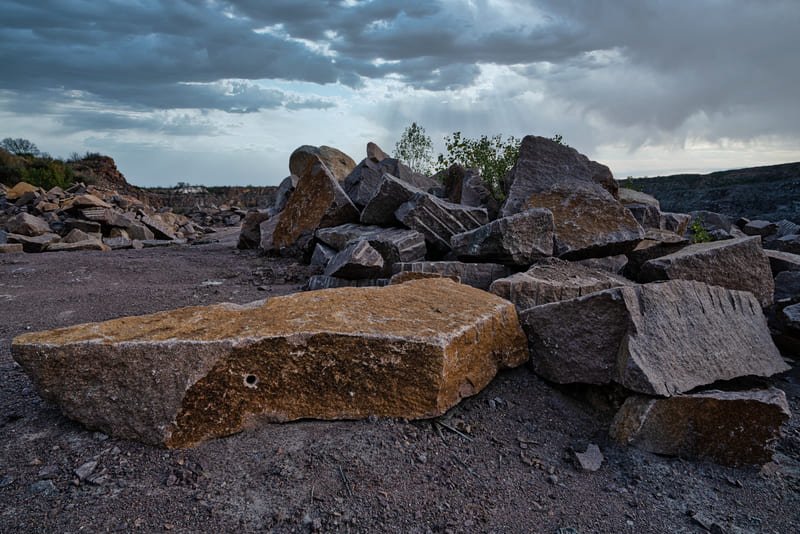
Understanding Rock Hardness
Understanding rock hardness in drilling has been very enlightening for me, especially during my years working in the field. Each time I met different geological conditions, it really felt like a new challenge to overcome. The Mohs scale, which measures rock hardness from 1 (talc) to 10 (diamond), became my most trusted reference. I remember working on a site with limestone and sandstone. These are soft rocks, rated between 1 and 3 on the Mohs scale. Drilling progressed smoothly and I felt a great sense of accomplishment watching the equipment glide through with little wear.
However, when I faced harder formations like quartzite or basalt, rated between 7 and 10, everything changed a lot. The rate of penetration (ROP) really dropped and I needed to choose equipment and strategies more carefully. I almost heard the drill bit groaning while pushing against the relentless resistance of hard rock.
Impact on Drilling Rate
Rock hardness really changes how we drill. Here’s how different rocks affect our work:
| Rock Type | Typical ROP (m/hr) | Challenges |
|---|---|---|
| Soft Rocks | 15-20 | Minimal wear |
| Medium Rocks | 8-12 | Moderate wear |
| Hard Rocks | 2-5 | Significant wear |
As I gained experience, I saw a clear pattern. Harder rocks need more force and special tools. It's not just drilling; it's about making wise choices.
Drill Bit Wear Patterns
Rock hardness affects drill bit wear patterns heavily. This can be fascinating and frustrating:
- Abrasive Wear: Bits wear down quickly in harder rocks. The hard minerals grind the bits, causing faster deterioration.
- Impact Wear: Tough formations chip or fracture bits if they're not strong enough.
- Thermal Wear: Friction generates heat, leading to thermal fatigue. It pushes me to double-check our cooling systems.
Material Selection for Drill Bits
Choosing the appropriate drill bit material is crucial. Here’s what I usually choose:
| Material | Best For | Advantages |
|---|---|---|
| Carbide | Hard rock | High wear resistance |
| Steel | Soft rock | Cost-effective |
| Diamond | Extremely hard rock | Long life in harsh conditions |
I’ve observed how the right bit greatly impacts efficiency and costs. Trust me, it really makes a difference.
Financial Implications
Drilling harder rocks brings financial challenges:
- Higher Equipment Costs: Frequent replacements require careful budgeting.
- Increased Labor Costs: Longer drilling times increase labor expenses.
- Operational Downtime: Downtime due to maintenance can significantly hurt productivity.
Strategies for Cost Optimization
To cut these costs, I’ve found effective methods:
- Invest in high-quality drill bits suitable for hard formations.
- Use real-time monitoring systems to fine-tune drilling parameters.
- Conduct thorough geological assessments before drilling to choose proper techniques and materials.
Exploring how rock hardness, efficiency and costs intertwine has helped me make better decisions to improve productivity and grow profitability. For more on improving your drilling operations, check resources on drilling techniques5.
Harder rocks decrease drilling rate significantly.True
As rock hardness increases, the rate of penetration generally decreases, leading to slower drilling operations.
Carbide drill bits are best for soft rocks.False
Carbide drill bits are designed for hard rocks, providing high wear resistance, not soft rocks.
How Can You Extend the Life of Your Drill Bits in Different Geological Conditions?
Have you ever felt the frustration of a worn-out drill bit when you really need it? I have experienced this, too! Over time, I discovered some tips to help drill bits last longer. Let’s look at some practical maintenance practices that really matter!
Regular inspections prolong drill bit life in various geological conditions. Adjust drilling parameters carefully. Choose the right materials and designs. Continuous staff training is very important. Staff training really matters.
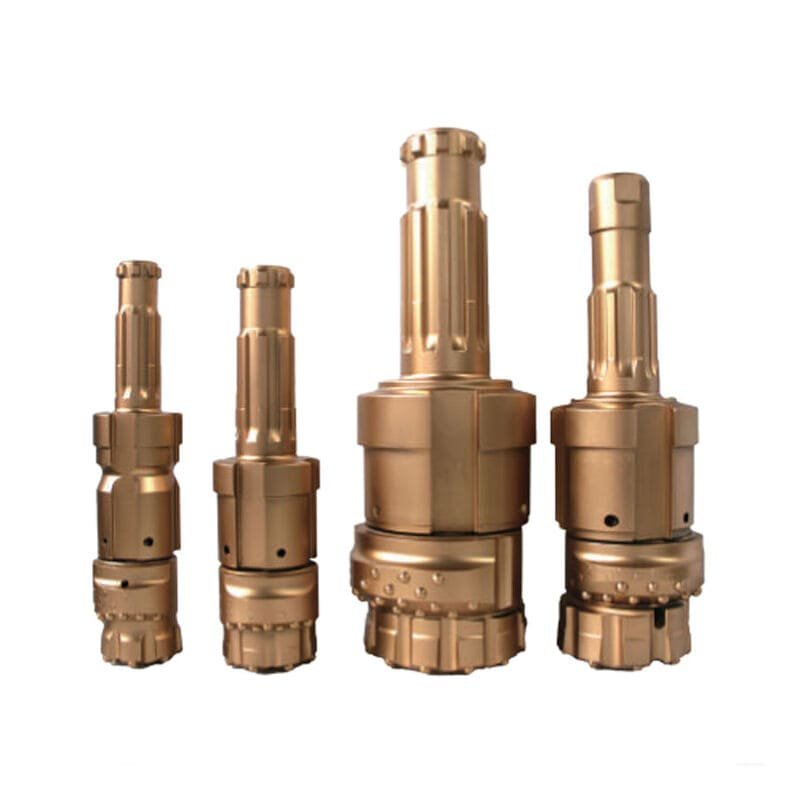
Understanding Drill Bit Wear in Various Geological Conditions
To effectively extend the life of drill bits, it’s crucial to understand how different geological conditions impact wear patterns. The relationship between rock hardness and drill bit wear is profound.
| Rock Hardness and Wear Rates: | Rock Type | Wear Rate | Example of Rock |
|---|---|---|---|
| Hard Rocks | High | Quartzite, Granite | |
| Soft Rocks | Moderate | Limestone, Shale |
In harder rocks, wear occurs much faster due to abrasive materials that can erode the cutting edges. Conversely, softer rocks tend to cause less damage, although they may still present challenges due to fine grain abrasiveness.
Maintenance Practices
-
Regular Inspection:
- Conduct routine checks for wear and damage on drill bits. This can help identify issues before they lead to failures.
- Look for signs of impact wear and abrasive wear, as these types are common in both hard and soft rock formations.
-
Proper Cooling Techniques:
- Implement cooling fluids during drilling operations to mitigate thermal wear caused by friction in hard rock conditions.
- Ensure that cooling systems are adequately maintained to maximize their effectiveness.
-
Adjusting Drilling Parameters:
- Alter the thrust and rotary speed according to the geological conditions to optimize performance.
- For example, reducing penetration rates in hard rock can significantly decrease wear rates.
-
Bit Material Selection:
- Choosing the right material for the drill bit is essential. For hard rocks, bits made of tougher materials like tungsten carbide are recommended to withstand high wear rates.
- Materials should be evaluated based on their hardness and toughness.
-
Using Appropriate Drill Bit Designs:
- Select designs that cater specifically to the geological conditions being encountered. Some designs may be more effective in distributing pressure and reducing localized wear.
- Consult technical specifications for the best designs suited for specific applications.
-
Implementing a Rotational Strategy:
- Change the rotation pattern or direction periodically to ensure even wear across all cutting edges of the drill bit.
- A systematic approach can help prolong the lifespan of bits significantly.
Continuous Learning and Training
- Staff Training Programs: Regular training sessions for operators can enhance their understanding of how geological conditions affect drill bit performance. This knowledge will help them make informed decisions about maintenance practices.
- Accessing Expert Resources: Utilize resources such as technical manuals6 and industry case studies to stay updated on best practices and innovations in drill bit technology.
By understanding these maintenance practices and adapting to various geological conditions, operators can significantly extend the life of their drill bits, leading to more efficient drilling operations.
Regular inspections prevent drill bit failures in hard rocks.True
Conducting routine checks can identify wear and damage early, preventing unexpected failures during drilling operations in hard geological conditions.
Soft rocks cause more wear than hard rocks on drill bits.False
While soft rocks present challenges, they generally cause less wear compared to hard rocks due to their abrasive nature and lower hardness.
How Can Technology Help Optimize Drill Bit Performance Based on Rock Hardness?
Have you ever felt frustrated when drilling through tough rock? Drill bits wear down very quickly. I really understand this feeling! Technology is now changing drill bit performance. It is very important for dealing with different rock hardness levels. Technology is changing the game.
Technology improves drill bit performance by using real-time monitoring systems. Advanced materials such as PDC make the drill bits stronger. Engineers design better shapes to handle rocks. Automation helps the drill adapt to rock hardness effectively.
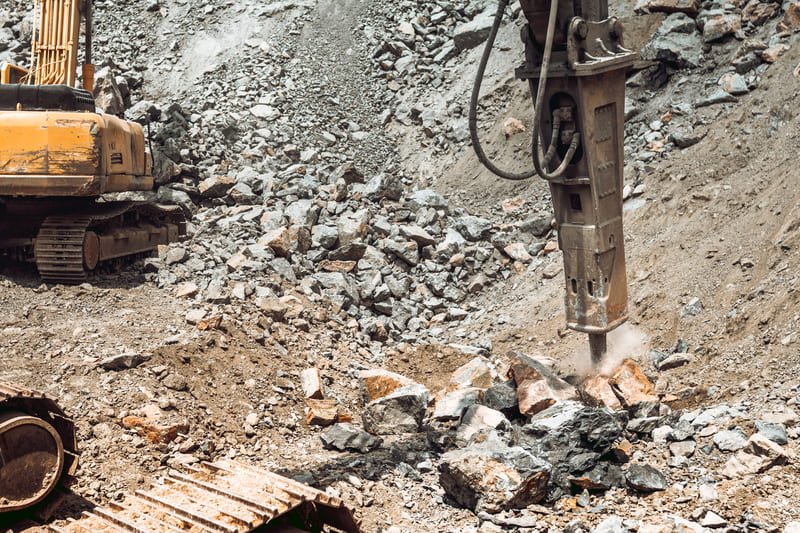
Understanding Rock Hardness and Its Impact on Drill Bit Performance
Rock hardness significantly influences drill bit performance, impacting wear rates, cutting efficiency, and overall drilling effectiveness. The ability to adapt technology according to rock hardness can enhance both operational efficiency and cost-effectiveness.
Advanced Monitoring Technologies
Employing real-time monitoring systems can provide crucial data on rock hardness and drilling conditions. These technologies allow for:
- Adaptive Adjustments: The drill changes its settings based on rock type. I adjust my way when I face unexpected problems.
- Data Collection: It’s like a coach tracking every move. These systems gather wear patterns and performance data for study.
- Predictive Maintenance: Knowing when bits might break really helps. Replace them before downtime occurs. This is a lifesaver!
For example, using real-time analytics7 leads to careful adjustments in drilling tasks, reducing downtime and improving productivity.
Innovative Drill Bit Materials
The development of new materials, such as Polycrystalline Diamond Compact (PDC), has been instrumental in optimizing drill performance:
| Material Type | Benefits | Recommended Use |
|---|---|---|
| PDC | High wear resistance, suitable for hard rocks | Mining, Oil & Gas |
| Carbide | Good impact resistance | Soft to medium rock formations |
| Steel | Cost-effective but lower durability | Temporary projects |
By selecting the right material based on rock hardness, drill operators can minimize wear and maximize penetration rates. For deeper insights into material selection8, consider the specific geological conditions encountered in your drilling projects.
Design Enhancements for Improved Cutting Efficiency
Optimizing the design of drill bits based on rock hardness can significantly enhance performance. Key aspects include:
- Cutting Element Configuration: Changing shape and arrangement enhances contact with hard surfaces.
- Gauge Design: Adjusting gauge features prevents under-gauge holes in hard rock. This saved me precision problems many times.
- Cooling Mechanisms: Advanced cooling methods are crucial when drilling hard rocks. I dealt with overheating during a long project once; I avoid that experience now!
For instance, modifying the bit design9 to accommodate higher thrust requirements improves efficiency when drilling through tough rock formations.
Automation and Robotics in Drilling Operations
The rise of automation in drilling technology presents numerous advantages:
- Autonomous Drilling Systems: These systems adjust drilling parameters in real time based on feedback from sensors monitoring rock hardness and bit performance. It’s like having another set of eyes.
- Robotic Assistance: Robots equipped with smart algorithms find the best drilling paths. They also make operations safer by reducing human error.
Integrating robotic solutions10 into drilling operations can not only improve efficiency but also lead to safer and more reliable practices in challenging geological environments.
Real-time monitoring improves drill bit performance.True
Using real-time monitoring systems allows for adaptive adjustments based on rock hardness, enhancing drilling efficiency and reducing wear rates.
PDC materials are ineffective in hard rock drilling.False
Polycrystalline Diamond Compact (PDC) materials are specifically designed for high wear resistance, making them ideal for hard rock applications.
Conclusion
Rock hardness impacts drill bit wear, efficiency, and costs. Understanding this relationship aids in material selection and enhances drilling performance across different geological conditions.
-
Explore detailed insights into rock hardness levels and their applications across industries. ↩
-
Explore this link to understand how material properties influence drill bit performance in hard rock, ensuring effective and efficient drilling operations. ↩
-
Learn about maintenance practices that can extend the life of your drill bits significantly, saving costs on replacements. ↩
-
Discover detailed insights on wear patterns and learn how to enhance tool longevity and performance through optimized practices. ↩
-
Explore this link to understand how rock hardness impacts drilling performance, helping you make informed decisions for your projects. ↩
-
Explore expert tips on drill bit maintenance practices that will help you save costs and enhance efficiency in your drilling operations. ↩
-
Discover innovative technologies that improve drill bit performance in varying rock conditions, helping you make informed decisions for your drilling projects. ↩
-
Learn about the latest advancements in drill bit materials that enhance durability and efficiency when drilling through hard rocks. ↩
-
Explore how automated drilling solutions can streamline operations and improve safety while adapting to different geological conditions. ↩
-
Find out how advanced robotic assistance can elevate your drilling operations by providing real-time data and enhancing safety measures. ↩

